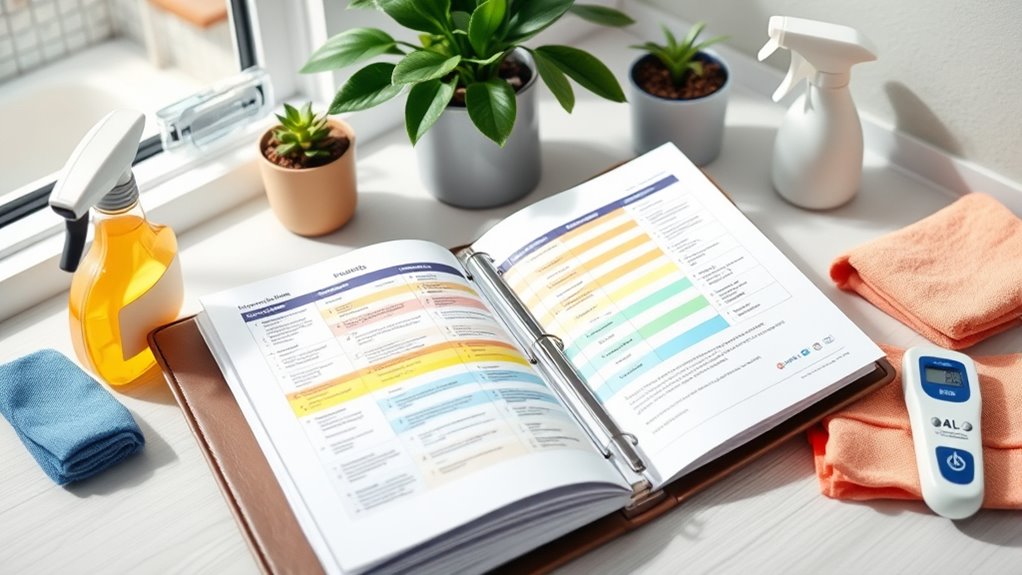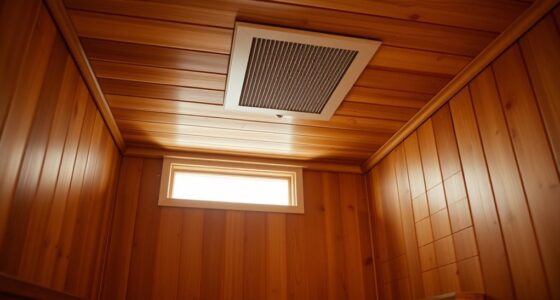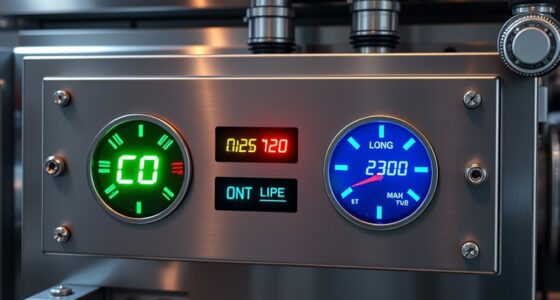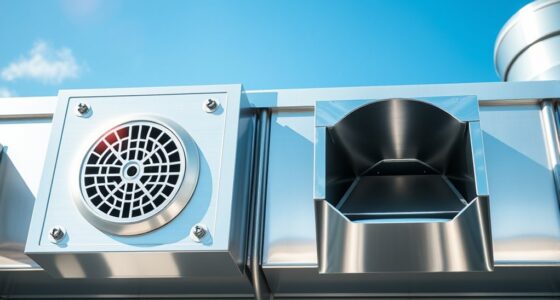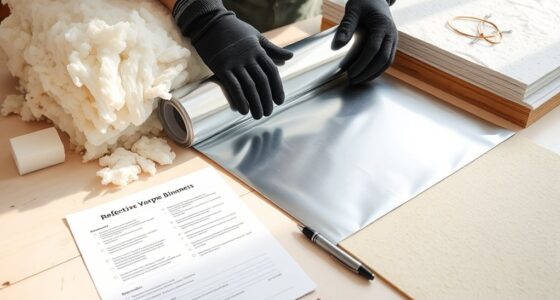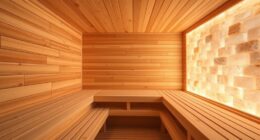The complete cleaning schedules and mold prevention checklist playbook guides you through daily, weekly, monthly, and seasonal routines to keep your home spotless and mold-free. It emphasizes regular surface wiping, deep cleaning, inspecting for water damage, and controlling humidity levels. You’ll find tools, early detection tips, and personalized strategies to tackle high-risk areas like bathrooms and basements. By following these tips, you can create a healthier, more comfortable environment—so stay tuned for detailed steps to implement these plans effectively.
Key Takeaways
- Provides daily, weekly, monthly, and seasonal cleaning routines to maintain a mold-free, healthy home environment.
- Outlines essential tools, protective gear, and inspection techniques for early mold detection and prevention.
- Emphasizes humidity control, moisture monitoring, and leak repairs to prevent mold growth.
- Offers specific strategies for seasonal ventilation, moisture management, and home maintenance.
- Includes a comprehensive checklist to organize tasks and customize mold prevention efforts effectively.
Daily Cleaning Tasks for a Healthy Home
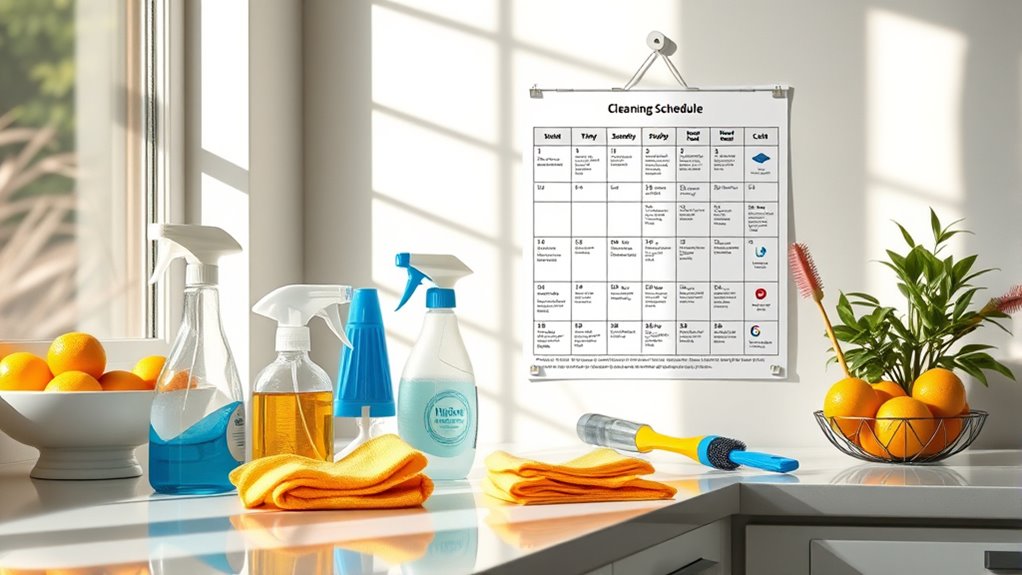
To maintain a healthy home and prevent mold growth, it’s essential to stay on top of daily cleaning tasks. Focusing on allergy control, you should regularly wipe down surfaces, especially in bedrooms and living areas, to reduce dust and pet hair buildup. Pet hair removal is vital; use a vacuum with a HEPA filter or a lint roller on furniture to keep pet dander at bay. Keep clutter to a minimum, as it traps dust and moisture, creating ideal conditions for mold. Wipe down bathroom surfaces daily, especially sinks and tubs, to prevent moisture accumulation. Ventilate rooms whenever possible to reduce humidity. Implementing automation technology in your cleaning routines can help maintain consistency and efficiency. These daily habits help you control allergens and keep your home dry, making it less hospitable for mold growth.
Weekly Deep Cleaning Routine
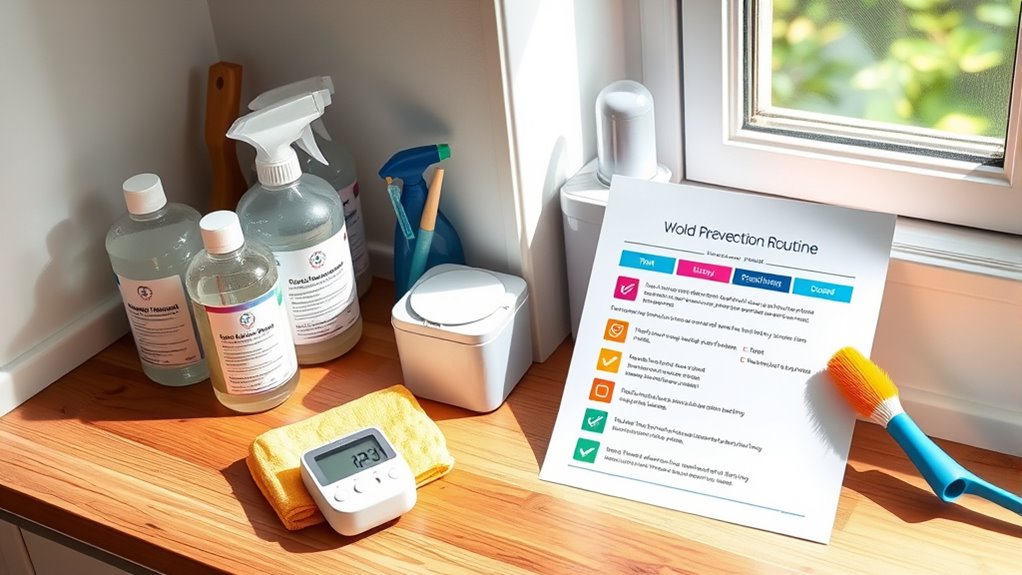
A weekly deep cleaning routine is essential for thoroughly removing dirt, dust, and mold spores that can accumulate over time. Start by dusting hard-to-reach areas and vacuuming carpets and upholstery to reduce allergens and mold growth. Regular air purifier maintenance is key—clean or replace filters to guarantee ideal air quality and prevent mold spores from circulating. Pay attention to stain removal techniques for any spills or marks on walls and fabrics, using appropriate cleaning agents to prevent mold buildup. Wiping down bathroom surfaces, kitchen counters, and windowsills, where mold tends to develop, is also crucial. Incorporating mindfulness practices into your cleaning routine can help you stay focused and reduce stress, making the task more manageable. By staying consistent with these tasks, you create a cleaner environment that inhibits mold growth and improves indoor air quality.
Monthly Maintenance Checks and Upkeep
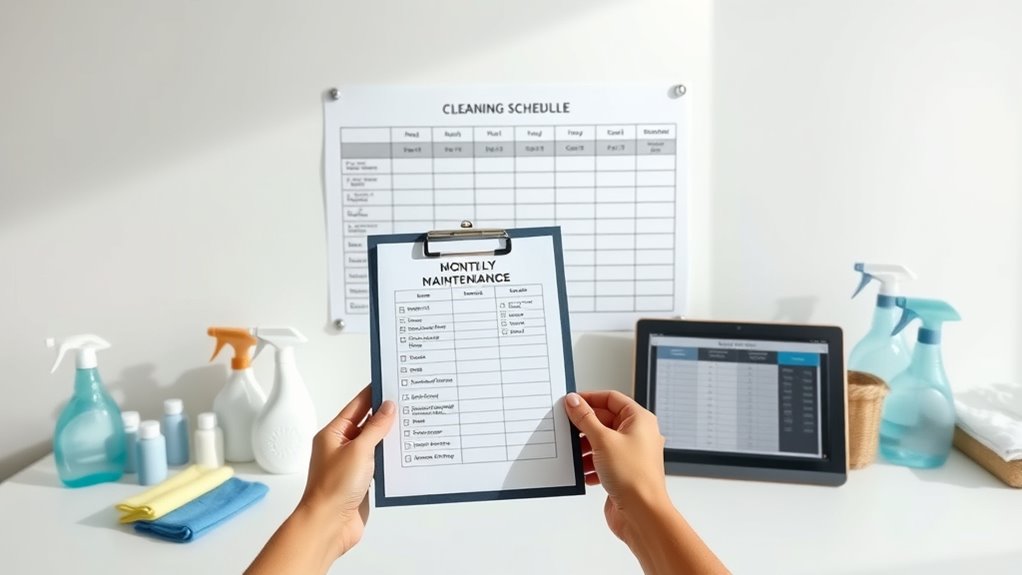
Performing monthly maintenance checks is essential for identifying potential issues before they become serious problems. Regular home maintenance helps catch leaks, poor ventilation, and mold growth early, saving you time and cost. Schedule a thorough mold inspection, especially in high-moisture areas like bathrooms and basements. Use the table below to organize your upkeep tasks: contrast ratio and image quality are key factors in determining the overall viewing experience.
| Task | Area to Check | Frequency |
|---|---|---|
| Inspect for leaks | Plumbing fixtures | Monthly |
| Clean ventilation vents | HVAC and exhaust fans | Monthly |
| Examine humidity levels | Entire home | Monthly |
| Look for mold signs | Bathrooms, basement | Monthly |
Staying consistent with these checks keeps your home safe, mold-free, and well-maintained.
Seasonal Prevention Strategies for Mold
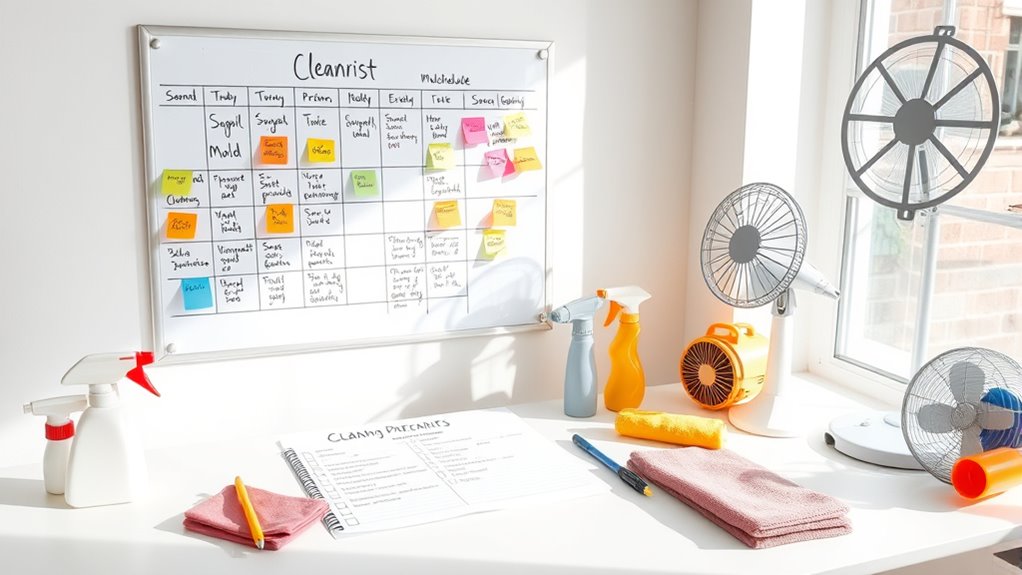
As seasons change, you can take specific steps to prevent mold growth. Boost ventilation in spring, control moisture in fall, and follow heating tips in winter to keep mold at bay. These seasonal strategies help maintain a healthy, mold-free environment year-round. Incorporating proper storage techniques for your belongings can further reduce humidity and prevent mold formation indoors.
Spring Ventilation Boosts
Spring is the perfect time to enhance your home’s ventilation to prevent mold growth. Improving air quality and ensuring your ventilation systems work efficiently can make a big difference. To maximize this, consider these three steps:
- Open windows daily to promote fresh airflow and reduce indoor humidity.
- Use exhaust fans in kitchens and bathrooms to vent moisture outside.
- Schedule a professional inspection of your ventilation systems to guarantee optimal performance.
- Incorporate regular cleaning of glycolic acid products to maintain healthy skin and reduce buildup that may contribute to moisture retention.
Boosting ventilation helps remove excess moisture that fosters mold. It also improves air quality, making your home healthier. Keep in mind, consistent airflow prevents damp spots and reduces mold spores. By actively managing your ventilation, you support a dry, mold-free environment all season long.
Fall Moisture Control
With the arrival of fall, maintaining proper moisture control becomes essential to preventing mold growth indoors. As temperatures drop, humidity control is vital to keep indoor air dry and prevent excess moisture that mold thrives on. Use a hygrometer to monitor indoor humidity levels, keeping them between 30-50%. Additionally, gutter maintenance is indispensable; clear out leaves and debris to prevent water overflow that can seep into your walls or foundation. Make certain downspouts direct water away from your home’s foundation, reducing moisture intrusion. Proper ventilation in attics, basements, and crawl spaces also helps manage humidity levels. Regularly inspecting for security vulnerabilities in your home’s exterior can further prevent water intrusion and potential mold issues. By staying vigilant with gutter maintenance and humidity control, you create an environment less conducive to mold growth and protect your home this fall season.
Winter Heating Tips
During winter, maintaining proper heating practices is essential for preventing mold growth indoors. To stay ahead, focus on these key strategies:
- Regularly inspect and perform radiator maintenance to ensure efficient heat distribution and prevent cold spots where mold can thrive.
- Calibrate your thermostat accurately to avoid overheating or underheating, which can cause condensation issues.
- Keep humidity levels below 60% by using exhaust fans and dehumidifiers when necessary, especially in poorly ventilated areas.
- Understanding Gold IRA Rollovers can help diversify your retirement investments, providing financial stability that supports your home maintenance budget during seasonal changes.
Proper radiator maintenance ensures consistent warmth, while precise thermostat calibration helps regulate indoor moisture. These steps reduce condensation and keep your home dry, making mold less likely to take hold. Staying vigilant during winter keeps your space healthy and mold-free.
Essential Tools and Supplies for Effective Cleaning
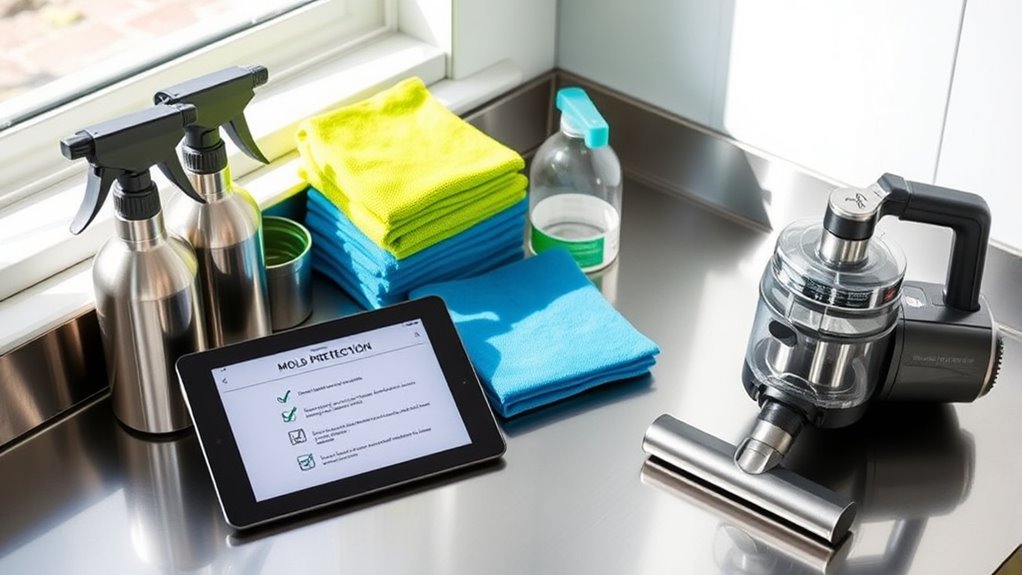
Having the right tools and supplies is essential for thorough cleaning and effective mold prevention. You’ll need reliable cleaning supplies like disinfectants, mold removers, and microfiber cloths to target mold and dirt effectively. Stock up on scrub brushes and squeegees to reach tight corners and smooth surfaces. Protective gear is equally important—wear gloves, masks, and goggles to shield yourself from mold spores and harsh chemicals. A sturdy bucket, spray bottles, and a vacuum with HEPA filters help streamline your cleaning process. Organizing your supplies in a designated caddy for easy access is also beneficial. Using quality tools ensures you clean thoroughly and safely, reducing mold risks and maintaining a healthier environment. Proper tools make your cleaning routine efficient and more effective, especially when targeting mold prevention strategies.
Tips for Identifying and Addressing Mold Early
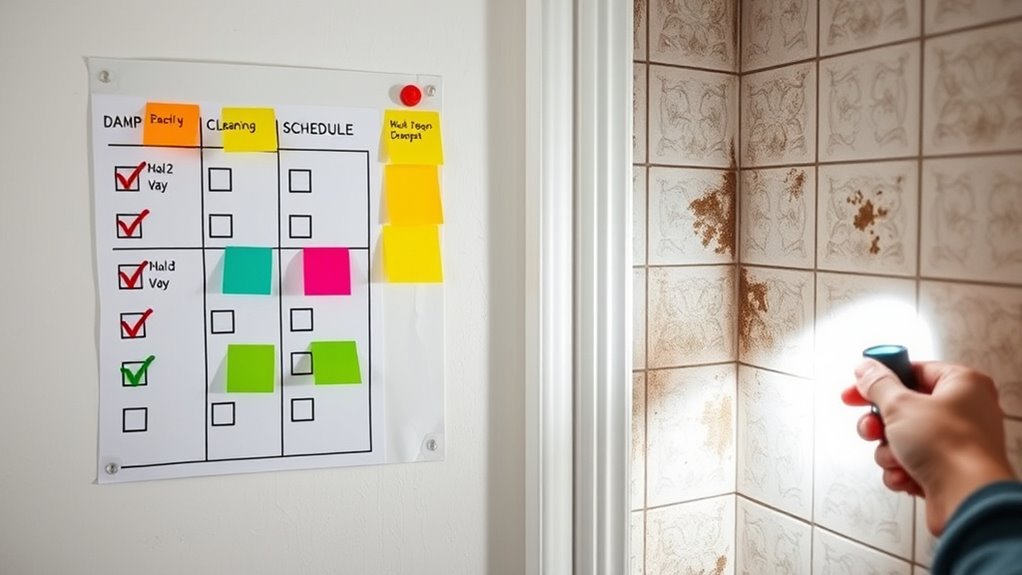
Early detection of mold can save you time and prevent extensive damage. To do this effectively, focus on mold detection and moisture monitoring. Keep an eye out for subtle signs like a persistent musty smell, discolored spots, or peeling paint. Regularly check hidden areas such as behind appliances, under sinks, and in basements. Use moisture meters to monitor humidity levels—ideally between 30-50%—to catch excess moisture early. Here are three quick tips:
- Conduct routine visual inspections for signs of mold or water damage.
- Use moisture monitoring tools to identify areas with high humidity.
- Address any leaks or water intrusion immediately to prevent mold growth.
- Remember that maintaining comfort and support solutions can help reduce moisture buildup and create a less hospitable environment for mold.
Creating a Personalized Cleaning and Prevention Schedule
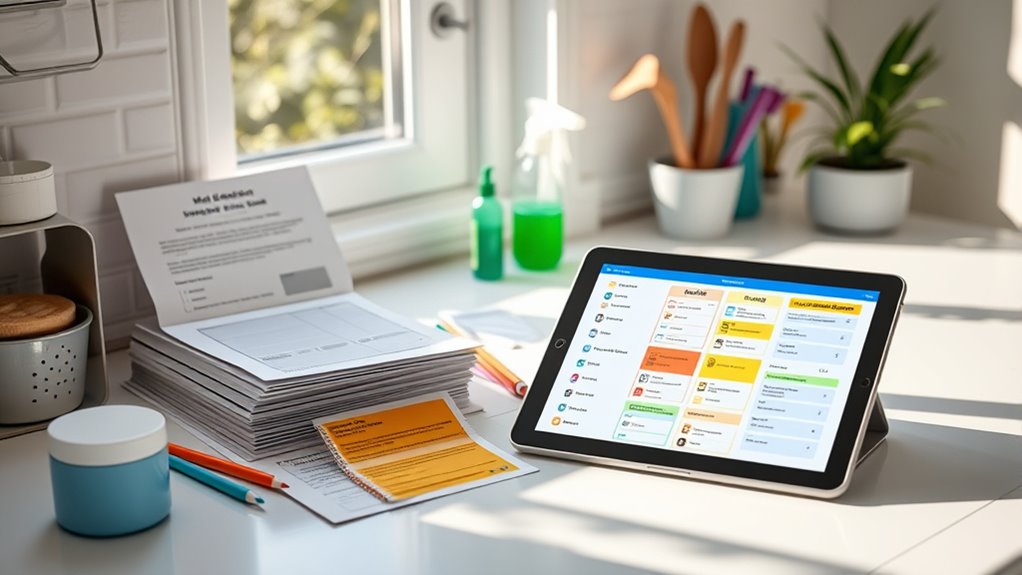
Creating a personalized cleaning and prevention schedule is essential for maintaining a mold-free environment tailored to your home’s specific needs. By developing personalized cleaning schedules, you ensure that high-risk areas like bathrooms, kitchens, and basements receive regular attention. Incorporate effective mold prevention strategies, such as drying damp areas promptly and using mold-inhibiting products. Your schedule should be flexible, adjusting to seasonal changes and home renovations. Consistency is key—set reminders and adhere to them. Regular inspections can help you spot early signs of mold growth. Additionally, understanding your vacuum cleaner performance metrics can help you choose the right tools for effective cleaning. With a tailored approach, you’ll minimize mold risks and protect your health. Remember, a personalized cleaning and prevention plan keeps mold at bay, ensuring a cleaner, healthier home.
Frequently Asked Questions
How Can I Tell if Hidden Mold Is Affecting My Home?
You can tell if hidden mold is affecting your home by noticing a persistent mold odor, especially in less ventilated areas. Check for signs of hidden water damage, like discoloration or peeling paint, which often indicate mold growth behind walls or under floors. Keep an eye out for musty smells and any unexplained dampness, as these are common clues that mold is lurking out of sight.
Are Natural Cleaning Products Effective Against Mold Prevention?
Think of natural cleaning products as your home’s gentle guardians. Yes, eco-friendly cleaning and plant-based solutions can be effective against mold prevention, especially when used consistently. They often contain ingredients like vinegar or tea tree oil that combat mold spores without harsh chemicals. While they may require more frequent application, these solutions are safer for your family and the environment, proving that effectiveness doesn’t have to come at the expense of sustainability.
What Are the Long-Term Health Risks of Mold Exposure?
You might face long-term health risks from mold exposure, especially if mold spores accumulate in your environment. Continuous inhalation can lead to respiratory issues like asthma, allergies, or even chronic lung problems. Over time, mold exposure can weaken your immune system and cause persistent coughing or wheezing. To protect your respiratory health, it’s crucial to control mold growth early and guarantee proper ventilation and cleaning to reduce mold spores indoors.
How Often Should Ventilation Systems Be Inspected for Mold?
You should inspect your ventilation systems, including HVAC maintenance, at least twice a year to guarantee ideal air quality. Regular inspections help identify mold growth early, preventing health issues. During these checks, clean filters, ducts, and vents thoroughly. Maintaining good air quality reduces mold risk and promotes a healthier environment. If you notice musty odors or visible mold, inspect and address the issue immediately to prevent further contamination.
Can Humidity Levels Alone Prevent Mold Growth Effectively?
Humidity control alone can’t fully prevent mold growth, but it plays an essential role. You should keep indoor humidity levels between 30-50%, as higher levels promote mold development. Regularly monitor your humidity with a hygrometer, and use dehumidifiers or ventilation to maintain ideal conditions. Combining humidity control with proper cleaning and ventilation ensures a more effective approach to preventing mold growth in your space.
Conclusion
By sticking to this cleaning schedule and mold prevention checklist, you’ll turn your home into an impenetrable fortress against mold invasion. No more sneaky mold hiding in corners or lurking behind walls—your home will be so spotless and mold-free, it’ll practically glow! Follow these tips consistently, and you’ll have a healthier, fresher home that’s virtually mold-proof. Get ready to be the superhero of your household’s cleanliness—mold doesn’t stand a chance!
